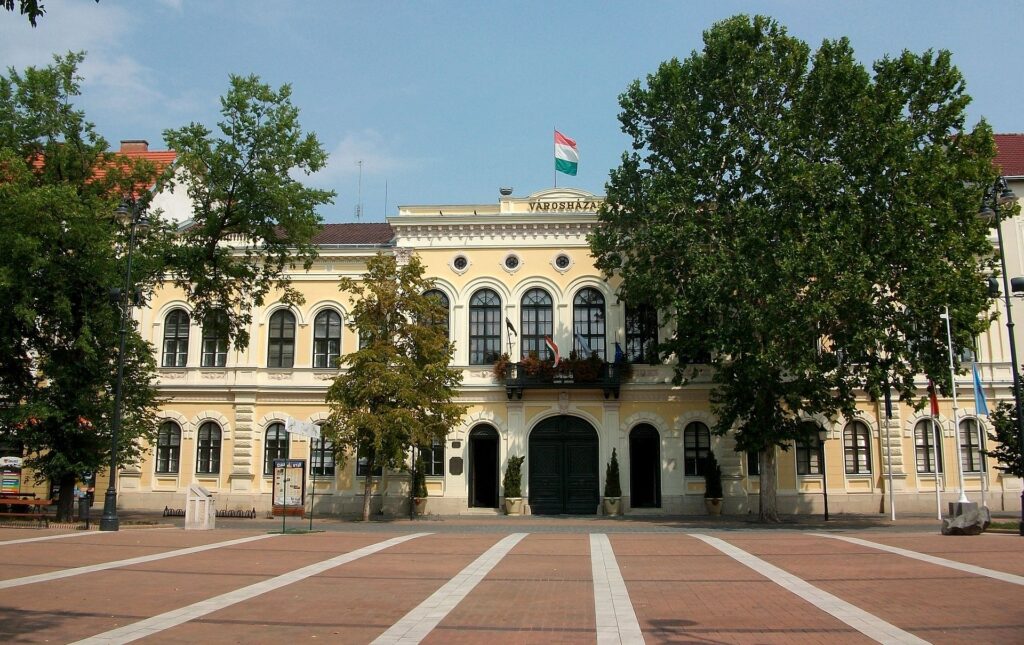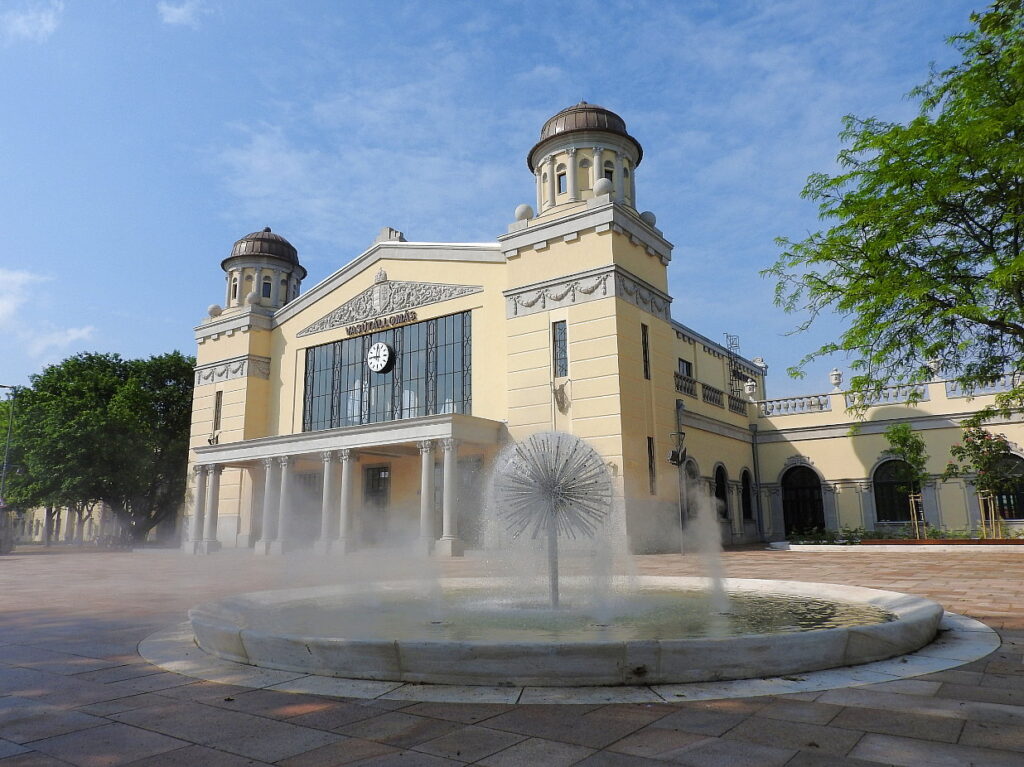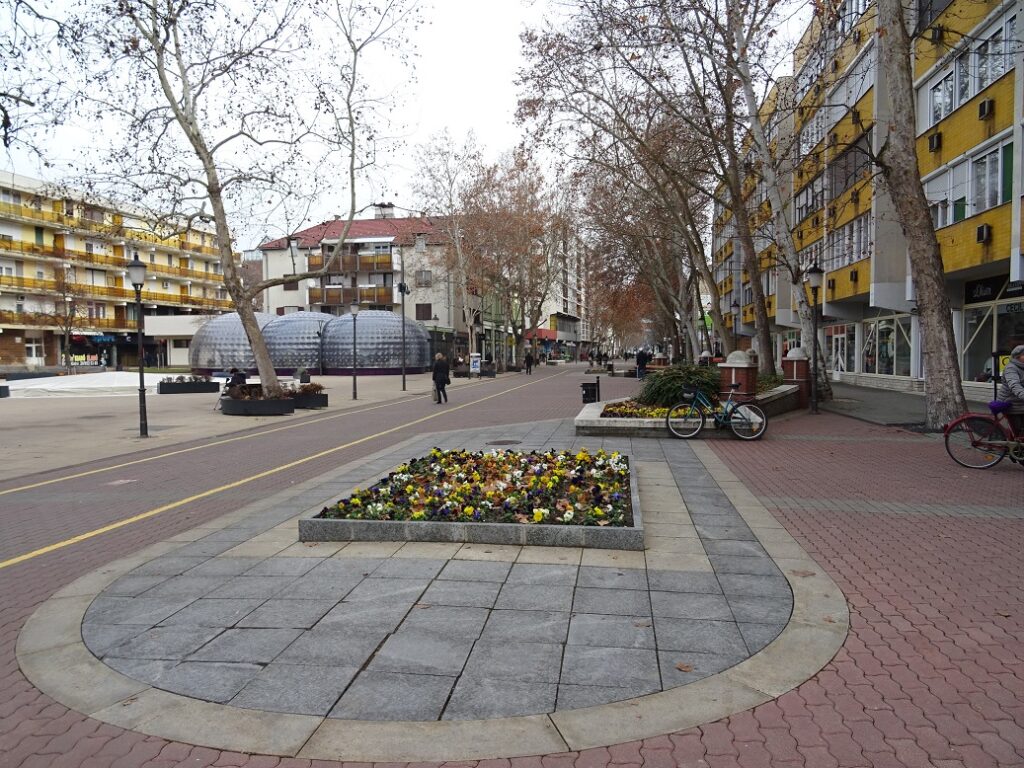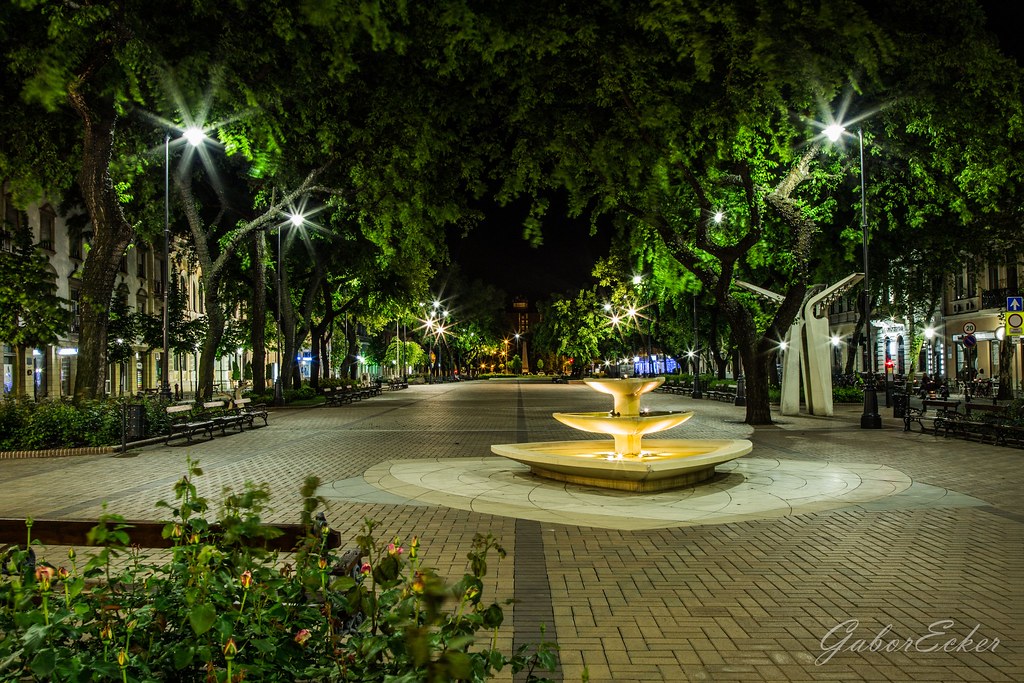The city is famous for its gastronomic specialties and events, such as the Hungaricum about Csaba sausage and the festival based on it . The most visited beer festival in Hungary was also held here , but it was moved to Gyula.
Békéscsaba is a city in Southeast Hungary, the capital of Békés County.
Culture [ edit ]
In the city, the culture started to develop a little late, as the level of urbanization also lagged significantly behind the indicators of settlements of similar size for a long time. True cultural development therefore began only in the second half of the 19th century , which received an even greater impetus from the compromise . It is worth mentioning the permanent stone theater of the Great Plain, the Jókai Theater in Békéscsaba , the Mihály Munkácsy Museum named after the city’s famous painter, Mihály Munkácsy . As Békéscsaba has been an important center of Slovakness in Hungary for centuries, the Slovak Country House can be found here . The Békés County Knowledge House and Library plays an important role in the public education of the city is.
Cultural institutions
- Theater, cinema
- Békéscsaba Jókai Theater (the first permanent stone theater in the Great Plain)
- Sunbeam Puppet Theater
- Center Cinema
- Museums, country houses
- Mihály Munkácsy Museum
- Mihály Munkácsy Memorial House
- Grain Museum (Csaba Farm and Grain History Exhibition Hall)
- Slovak Country House
- Jankay Contemporary Gallery (merged with the Mihály Munkácsy Museum in 2013)
- Cultural houses, libraries
- Arany János Cultural House
- Békés County Knowledge House and Library
- Békési út Community Houses – Fairytale house
- Csabagyöngye Cultural Center
- Csaba Honvéd Cultural Association (FEK)
- Lencsési Community House
- Slovak House of Culture (Dom slovenskej kultúry)
- Railway House of Culture
- Balassi Bálint House of Hungarian Arts
Sights
- Árpád Spa and Bath , built in 1922 , renovated in 2003 .
- Békéscsaba Jókai Theater , the first permanent stone theater in the Great Plain. It was built between 1877 and 79 , rebuilt in 1913 .
- Lutheran small church , built in Baroque style, in 1745.
- Lutheran Great Church , the largest Lutheran church in Central Europe, with braid and empire elements. The helmet of two gallery-level interiors, the 70-meter-high tower, originally designed as a cushion, was simplified in 1843 .
- Lutheran Grammar School neocopf style building (built in 1899 , based on the plans of Ernő Sztraka .
- Hotel Fiume, built in 1869, designed by Ernő Sztraka, is an upscale hotel, named after the Oradea-Szeged-Fiume railway line built at that time.
- Sacred Heart Catholic Church, built in 1992 – 93 in the two artists, the Pope László Patay, Mladonyiczky Bela awarded by the state this művükért.
- Great Catholic Church ( St. Anthony of Padua Co-Cathedral ). Built in 1910 , the two-tower neo-Gothic church was designed by Antal Hofhauser .
- Kossuth statue, erected by the citizens of the city in 1905 , was designed by János Horvay.
- Mihály Munkácsy Museum , the institution that inherited the work of Mihály Munkácsy, who lived and worked here as a child , was handed over in 1899 . It was renovated in 2007.
- The Mihály Munkácsy Memorial House , the 21 paintings of the famous painter, can be found here, where his sister Gizella used to live, who was regularly visited by the artist.
- Fairytale house, house decorated with sculptures, gingerbread figures and drawings designed by Munkály Schéner, Munkácsy Prize-winning artist.
- Slovak Country House , a baroque and classicist folk house with a porch and a lobed gable, was built in the 1860s.
- The sculpture promenade, next to the Living Water Canal, shows the greats of the city and the people attached to it in the busts.
- Former neolog synagogue building – today a furniture store (Lázár u. 2.) was built in 1893 .
- The building of a former Orthodox synagogue – today a shop (Luther u. 14.) was built in 1894 .
- New synagogue – Széchenyi grove , next to a neolog Jewish cemetery, was built in 2007.
- City Hall ( romantic , designed by Ernő Sztraka , the facade was designed by Miklós Ybl , built in 1873 )
- Reformed Church ( Neo-Romanesque , designed by József Wagner, built in 1912, with a 36 m high tower and 280 seats; bells: 1049 kg B-tone and 415 kg A-tone.) Church garden id. With the bust of Gyula Koppányi (by Attila Mészáros). – Deák u. 4.
- Gerlai Wenckheim Castle , built in a romantic style, was completed in the 1860s. It is currently waiting for a buyer in a dilapidated state.
- Wenckheim Castle
- Sights of Békéscsaba





